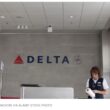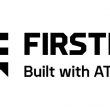Truly a no-brainer
Brookline, Mass., is your typical New England community. Surrounded by the city of Boston on three sides — and steadfastly refusing throughout its history to be swallowed by its much larger neighbor — the 6.8-square-mile town has tree-lined streets and the feel of an affluent suburb — which it is, with a per-annum income of about $67,000.
Viewed another way, Brookline is atypical. It has lousy cell coverage, thanks in part to those tree-lined streets and the not-in-my-backyard power of its 57,000 affluent citizens, who regularly block cell tower construction. It also has what is likely the first community-wide deployment of a 4.9 GHz system that covers its boundaries with broadband data for police and other public-safety players. Users can retrieve police reports and crime incident information, as well as access remote video surveillance footage and geographic information system (GIS) mapping info, in addition to other data applications.
In 2002 the FCC, motivated by the increased priority on homeland security in the wake of the 9/11 attacks, allocated 50 MHz of spectrum — from 4940-4990 MHz — for fixed and mobile wireless services to support public-safety broadband data applications and enable interagency communications.
“What we learned after 9/11 in the public-safety space is that we have a zillion radios out there and hardly any of them are interoperable. This is a serious problem,” said Craig Mathias, principal at Farpoint Group.
The 4.9 GHz system is technology Brookline would willingly share with its neighbors — ideally starting with Boston. Scott Wilder, director of technology for the Brookline Police Department, describes himself as a “pusher of 4.9 in the area.” He’s been involved with the Metro Boston Homeland Security project, a critical infrastructure plan that’s putting wireless cameras throughout the region’s nine municipalities to cover egress routes out of Boston in the case of an evacuation.
“From my perspective here in Brookline it’s an absolute no-brainer,” Wilder said. “I’ve been extremely happy with the actual way the 4.9 is propagating in Brookline. The next big step is having these networks built out and having the ability to interoperate and extend to other cities and municipalities that we border.”
The first big step for Brookline was to find a partner and establish a business model. Galaxy Internet Services, which entered into a public-private partnership with the city, uses Strix Networks’ multi-radio wireless mesh technology to deliver a 2.4 GHz public-access network and a 4.9 GHz network for public safety throughout the same area.
“A standalone [4.9 GHz deployment] really wouldn’t make any sense,” said Mathias. “The whole trend now is maybe not having a single protocol that supports everybody … but at least sharing as much of the infrastructure as you can across public safety and commercial services within a single system. That’s a brilliant idea, and just for reasons of cost it’s going to predominate.”
Wilder agreed: “If you’re going to build a Wi-Fi network, just don’t do the traditional 2.4 — also throw in 4.9,” he said. “Don’t sit there and a year later say, ‘We want to do something for public safety.’”
Galaxy’s network is free for public safety and priced at various levels for city municipal services. The company also is developing a wireless data business targeted to residential and commercial users.
Galaxy wants to see 4.9 GHz succeed in Brookline. If the concept bleeds into neighboring communities, its private customer base would expand as well.
“It’s a very popular topic here,” said Sandy Bendremer, Galaxy’s vice president. “We’re working with a lot of communities in Massachusetts, and there is a lot of interest in the interoperability of these networks. What’s really a more critical factor is making sure that there is standardization for authentication and encryption across community boundaries. It’s not a technical feat; it’s an administrative feat.”
Wilder and others are working on that. “Everybody in our area has a 4.9 license, so we’ve identified it as something on the board that we would eventually be moving onto. We’ve just been ahead of the curve here in Brookline,” he said.
While 4.9 GHz equipment is being installed in patrol cars and laptops, and interagency cooperation is developing, Wilder is preparing for his next challenge.
“I’m looking for handheld technology, [and vendors] … have no idea about how they’re going to accommodate 4.9 — it’s not on the drawing board yet,” he said. “Here we are doing cutting-edge stuff, but on the other side of the coin I’m still being handicapped [without] solutions to really access what we have going here.”
But if the deployment is as successful as everyone believes it will be, and if 4.9 GHz indeed bleeds into adjoining communities, then that should be a short-term problem.
“The big difficulty has always been the devices,” said Peter Jarich, principal analyst-wireless infrastructure at Current Analysis. “That’s changed, and [now] there are some PC cards out there. … There are still some issues that groups are going to figure out, but the stage is set for this now.”
The Brookline deployment has proved a few things about the wireless technology, said Nan Chen, vice president of product management and marketing at Strix Networks.
“If we can deploy Brookline, we can probably deploy anywhere,” Chen said. “It’s heavily foliaged; every turn you can’t see around the corner because of a tree.”
Chen stopped short of calling the deployment a technology “test bed,” preferring to call it “a testimony to the ability to deliver public-safety [communications] with a wireless mesh. Many CIOs around the area are looking to see how successful Brookline is and how they [can] deploy theirs modeled after Brookline.”
Strix is ready for the next technical challenge: adding 700 MHz capability to the 2.4 and 4.9 GHz radios. “From our technology perspective it’s workable, but there are a lot of things that haven’t been worked out [concerning] 700 MHz: who’s paying for it and how it would get distributed,” Chen said.
With its higher propagation and the promise that at least some of the spectrum that will become available when TV broadcasters transition from analog to digital will go to public safety, 700 has become something of a public safety darling — but it could become an albatross.
“Seven hundred is definitely on our radar, but … you don’t have a clue,” as to how things will turn out, Wilder said, adding that even the most optimistic vendors don’t believe there will be anything available in the 700 MHz range until 2009, which is when the spectrum is scheduled to be vacated by broadcasters.
“Hopefully I’m wrong, but I think there’s too much money involved” from private companies that will vie for the airwaves at auction, he said. “I think maybe there will be something for public safety, but it won’t be the pot of gold we’re all hoping for.”
Meanwhile, Wilder remains excited about the modular design of the Strix platform:
“The box holds six radios. If 700 becomes something that we want to jump into, I have slots. We have the flexibility to grow in the future.”

















